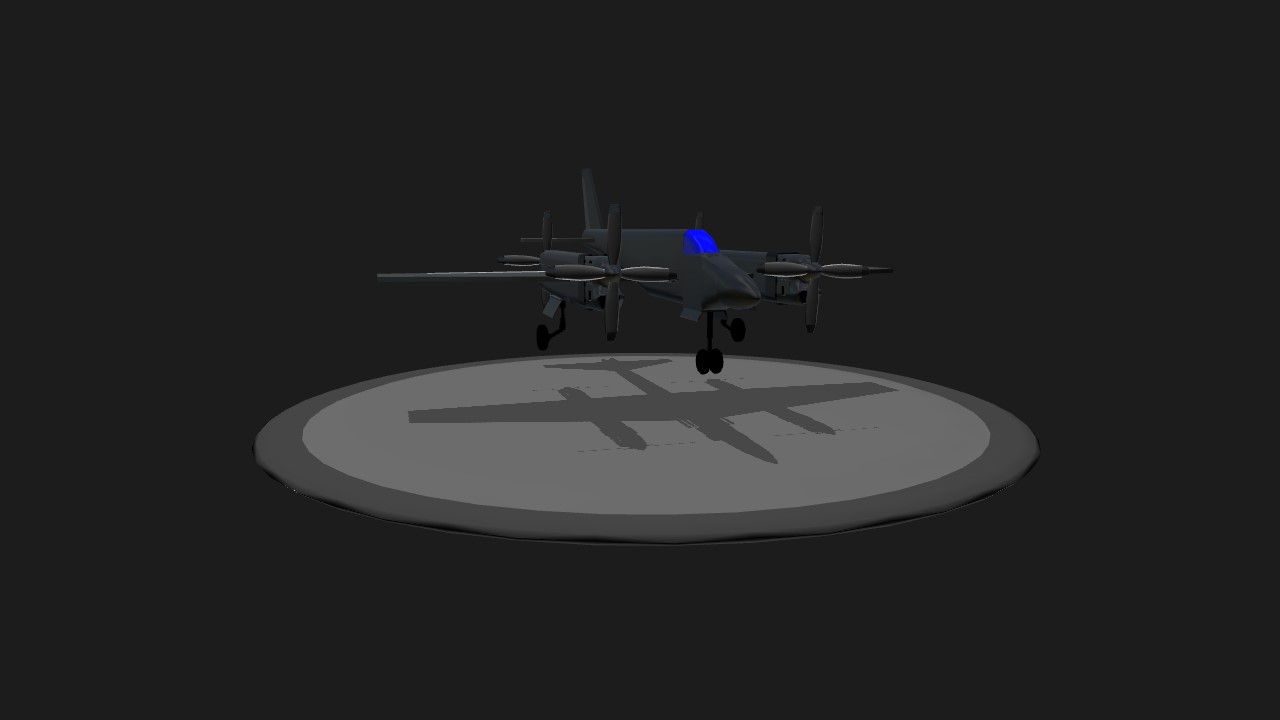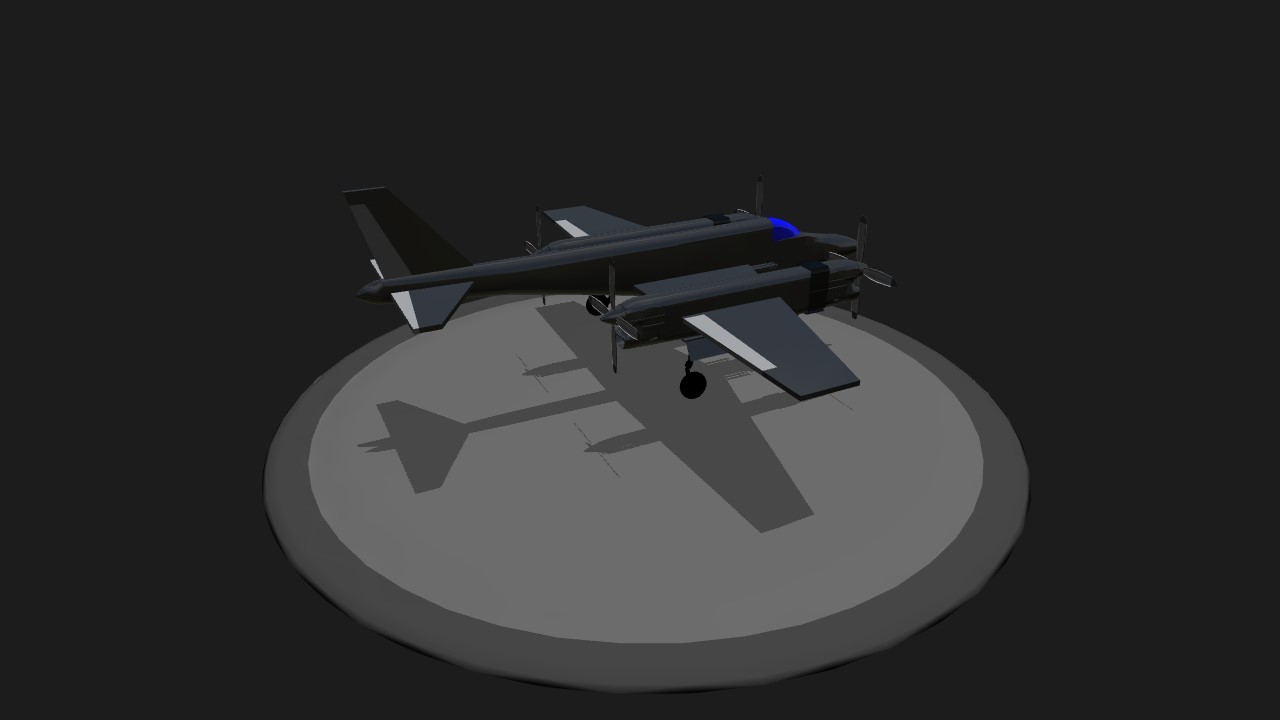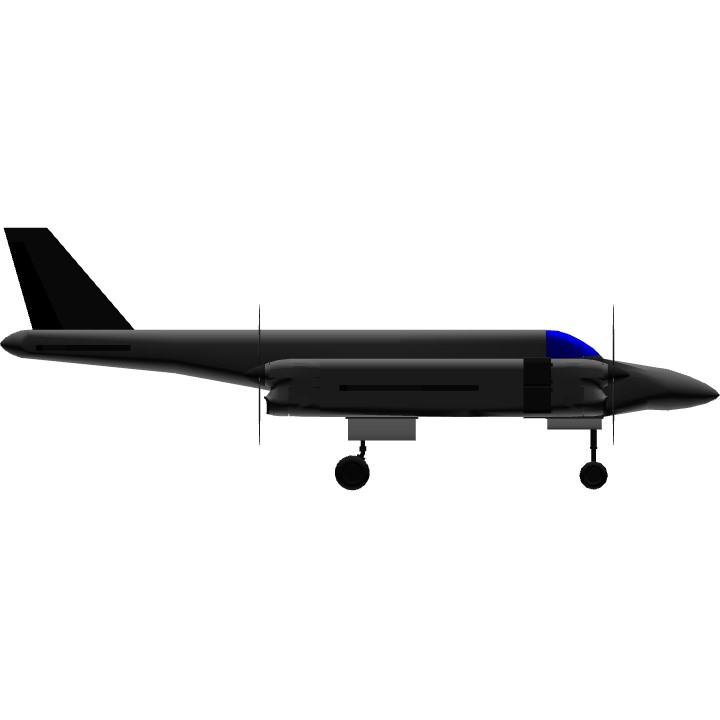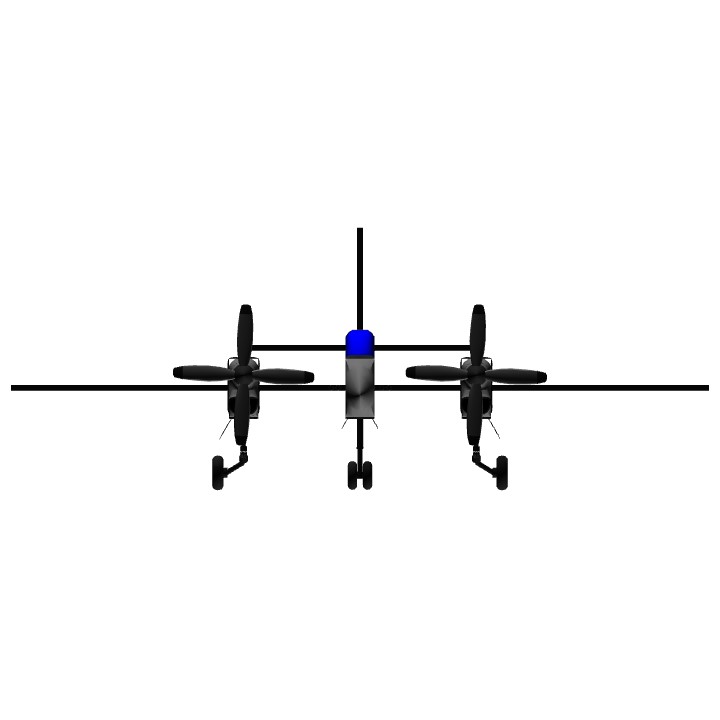The PF-67 is a result of a failed expirement. The aircraft itself is designed by Advanced Aerodynamic Aeronautics, formerly known as Thunderbolt Palmer. The aircraft was originally a testbed for a new form of propulsion, which ultimatly failed. The airframe was recycled and placed in storage, where it sat or months without being acknowledged. When engineers finally brought the aircraft out of storage, they set to work. They removed the expiramental propulsion, and replaced it with rear facing turbo-prop engines.
But the props proved to be a disappointment as the top speed barely tipped the required top speed for the aircraft (358 MPH). The engineers added two more turbo prop engines in front, and also redesigned the entire aircraft around these two sets of counter rotating engines. The wings were stretched out, the fusalage lengthened, and the fuel tanks refit for standard petrol. With two more prop engines, and the added benefit of counter rotating props, brought the top speed of 643 MPH in a straight line, and 997 MPH in a 90° dive. Air brakes were placed directly behind the engine hubs, and when deployed, brought the aircraft for top speed to 250 MPH in 2.427 seconds. A design flaw was that above 950 MpH, the ailerons would freeze and lock in place. This phenomenon is known as compression, where the air traveling over a control surface is so fast, that it prevents the control surfaces from rising or depressing.
The aircraft can accelerate better than the company's earlier flagship; the JPAA. And can climb better than rest of the company's aircraft.
The first factory variant is the PF-67 armed with quad .50 caliber machine guns, and spaces between the fusalage and engine hubs for installation of field kits
Specifications
General Characteristics
- Predecessor Twin Prop
- Created On iOS
- Wingspan 39.1ft (11.9m)
- Length 40.6ft (12.4m)
- Height 14.6ft (4.5m)
- Empty Weight 8,388lbs (3,804kg)
- Loaded Weight 20,794lbs (9,432kg)
Performance
- Horse Power/Weight Ratio 0.577
- Wing Loading 62.1lbs/ft2 (303.0kg/m2)
- Wing Area 335.0ft2 (31.1m2)
- Drag Points 2850
Parts
- Number of Parts 44
- Control Surfaces 5
- Performance Cost 353






